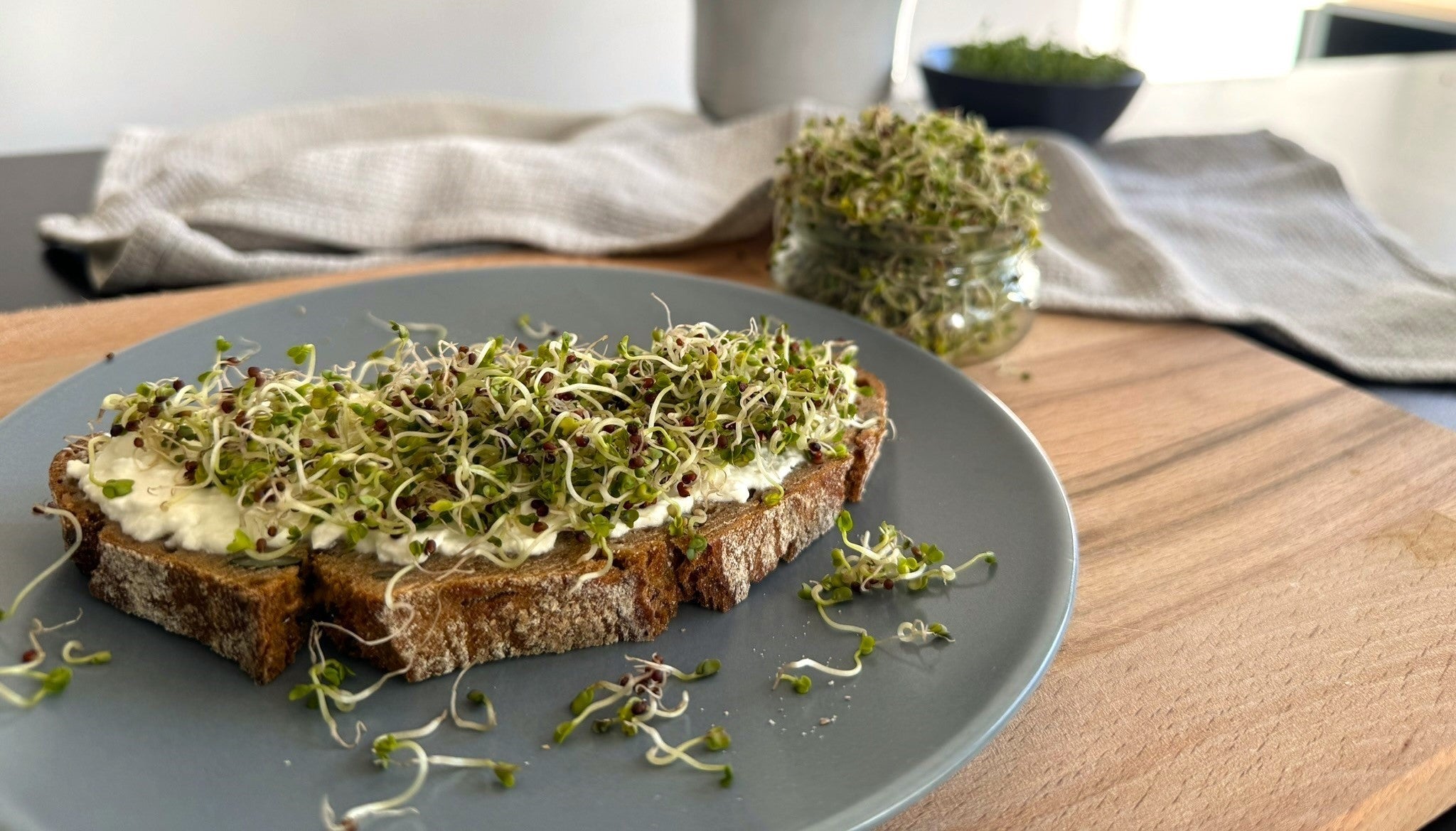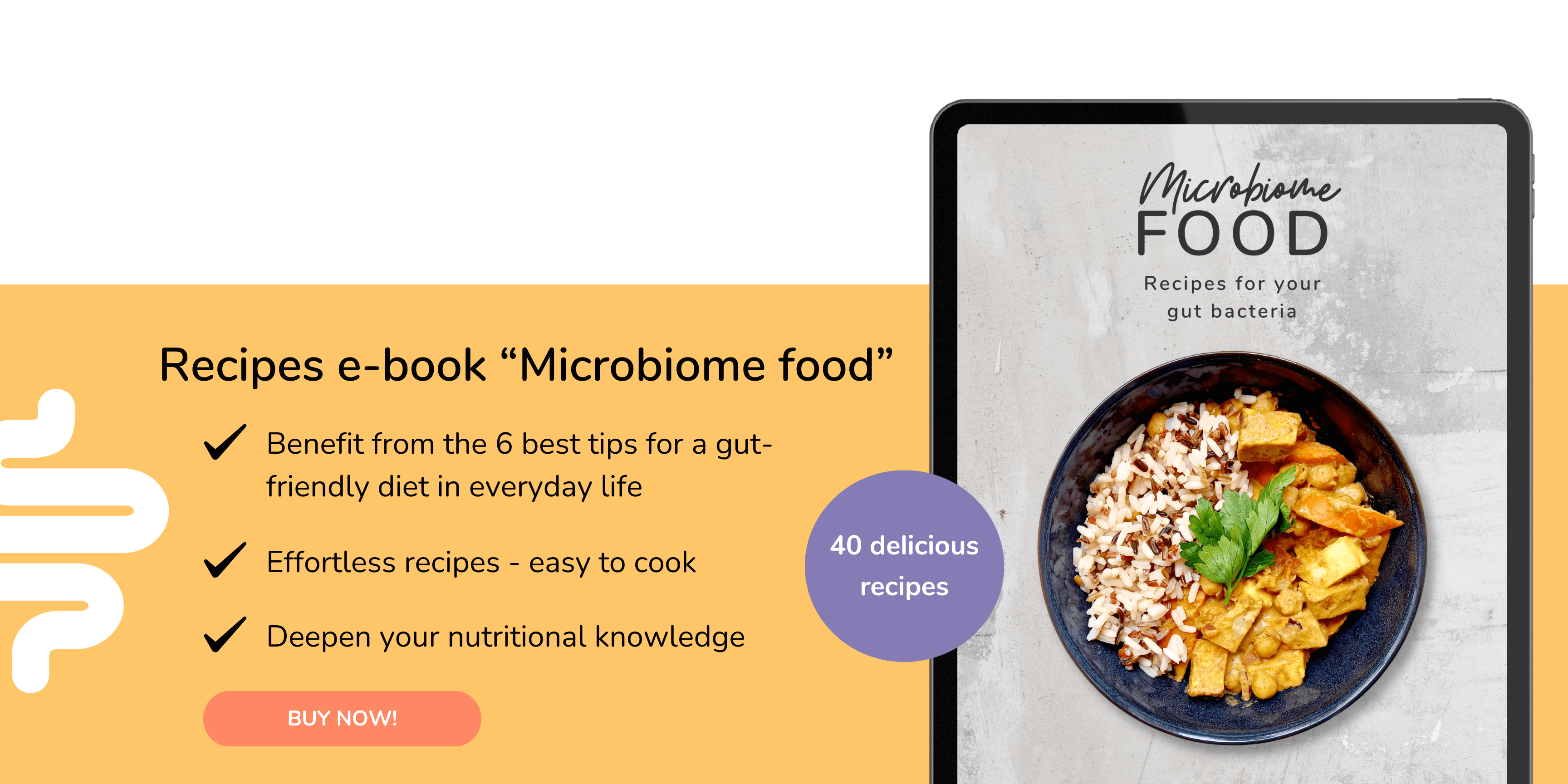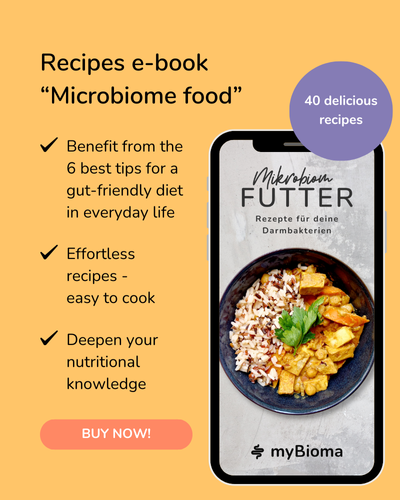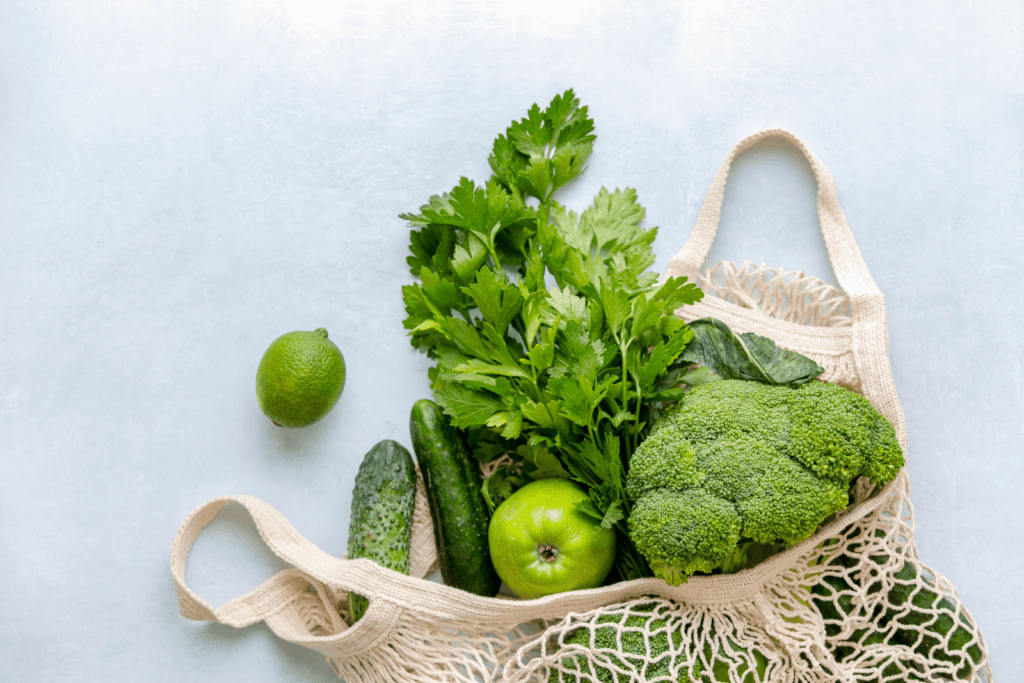Sprouts are little powerhouses that can grow right in your kitchen all year round. No balcony, garden, or green thumb required! They’re ideal during the colder months for supporting the immune system and nourishing the body with essential nutrients. Sprouts like cress, alfalfa, broccoli, and mung beans are rich in vitamins, minerals, dietary fibre, and antioxidants. Plus, they enhance every meal visually and add a crunchy, fresh delight to your plate.
What are sprouts?
Sprouts can be grown from the seeds of many different plants and are ready for harvest and eating after about 3–8 days, depending on the type.
While mung bean and soy sprouts are an integral part of traditional Asian cuisine, baby plants are becoming increasingly popular here as well. And for good reason! The sprouting process enhances the levels of bioactive, bioavailable nutrients, offering us a richer supply of minerals, vitamins, and antioxidants compared to unsprouted grains or legumes (1).
How does this happen? A plant seed contains all the important nutrients it needs to grow into a new plant. These include vitamins, minerals, proteins, fats and carbohydrates. As the seed begins to sprout, something exciting happens: it starts producing enzymes. These can be imagined as little workers that transform the stored nutrients in such a way that the new, growing plant can use them for growth. During this process, natural compounds that block nutrient absorption, known as anti-nutritional factors, are broken down. When we eat the sprout, we benefit from these changes, as the nutrients are easier for our bodies to absorb and use (2).

Sprouts are small nutrient powerhouses that can be enjoyed raw and used in many ways - for example as a topping on bread with cream cheese.
How healthy are sprouts?
Sprouts have numerous properties that make them a true superfood - they contain an incredibly high concentration of nutrients (1,2):
- Antioxidants: The high content of various polyphenols, such as carotenoids, gives sprouts their antioxidant properties, among other things. Antioxidants protect cells from damage and thus support the immune system and general health.
- Vitamins: Sprouts provide us with a wide range of vitamins such as vitamin C, vitamin E and B-vitamins such as folic acid, thiamine, niacin and riboflavin.
- Fibre: The fibre content of legumes and cereals increases during the germination process (3,4).
Moreover, the germination process brings out several benefits that we can take advantage of:
- Increased bioavailability of proteins: During germination, the proteins stored in the seeds are broken down into smaller building blocks - amino acids. This makes it easier for us to absorb these amino acids and use them to build our own body proteins.
- Increased bioavailability of minerals through the breakdown of anti-nutritients: Plants naturally contain substances such as phytates, oxalates and tannins, which can hinder the absorption of certain minerals in the body. These substances are partially broken down during the germination process and we can better absorb important minerals such as iron and calcium from the sprouts.
- Better digestibility: Hard-to-digest carbohydrates are largely broken down and converted into more easily digestible carbohydrates.
- Gluten reduction: Research has shown that the germination process reduces the gluten content in grains. As a result, sprouted grains or products made from them can offer a suitable alternative for individuals with gluten sensitivity (3).
- Strengthening the gut microbiome: During germination, the levels of valuable secondary plant compounds such as polyphenols, prebiotic fibres, amino acids, and γ-aminobutyric acid (GABA - a calming neurotransmitter) increase by 4 to 10 times. These compounds can support the growth of beneficial gut bacteria and enhance their activity (5).
Since sprouts are usually eaten raw, valuable, heat-sensitive micronutrients such as vitamin C are hardly lost.
Which sprouts are the healthiest?
Each plant has a unique nutrient profile and specific health benefits, which is why it’s best to maintain a varied diet. The same goes for sprouts, and it’s not possible to say universally which variety is the healthiest.
However, cruciferous sprouts in particular have a special property: their high content of glucosinolates (mustard oil glycosides). Broccoli sprouts, in particular, have demonstrated cell-protective and anti-carcinogenic properties in some studies, thanks to their exceptionally high sulforaphane content (the most well-known glucosinolate) (6). In addition, broccoli sprouts can have a positive effect on cardiovascular and metabolic health thanks to these ingredients (7). Broccoli sprouts contain up to 50 times more glucoraphanin (the precursor of the health-promoting sulforaphane) than fully grown broccoli (2).

Broccoli sprouts: An excellent source of health-promoting sulforaphane.
Can sprouts be dangerous?
Normally, sprouts can be eaten raw without any problems. However, undesirable, harmful microorganisms such as E. coli or salmonella can easily multiply in the warm, moist environment that is necessary for sprout growth. Unfortunately, it can happen that the seeds are already contaminated, and this may not always be visible in the sprouts (2). For this reason, children, pregnant women, the elderly and people with a weaker immune system should cook both purchased and home-grown sprouts thoroughly and not eat them raw.
To reduce the risk of microbial contamination when growing your own sprouts, you should consider the following points:
- Kitchen hygiene: Wash your sprouting jar thoroughly before use.
- Pay attention to the quality of the seeds: Buy seeds from suppliers who guarantee microbially tested quality.
- Rinse sprouts in the jar twice a day and drain well to prevent the growth of unwanted microorganisms.
- Store ready-to-eat sprouts in the refrigerator and eat them within a few days and only if they still look, smell and taste good.
- Wash sprouts before eating and make sure they show no signs of spoilage (such as odor, slimy spots, or mold).
Variety: The most popular sprouts at a glance
Sprouts can be grown from many different plant seeds. The most popular (or best known) include:
- Legumes: lentils, adzuki beans, chickpeas, soybeans, mung beans, green peas, …
- Cereals and pseudocereals: buckwheat, amaranth, kamut, quinoa, oats (kernels), wheat, ...
- Vegetables: radishes, broccoli, mustard, red clover, cress, fenugreek, …
Here’s a table with some of our favourite sprouts, including their flavour profiles, usage examples, and germination times until they’re ready to eat:
|
sprout type |
taste & texture |
ways to use |
germination time |
|
mung bean sprouts |
mild and crisp |
Asian dishes, salads |
3-5 days |
|
alfalfa sprouts |
mild, nutty, tender |
topping for sandwiches |
4-6 days |
|
broccoli sprouts |
slightly spicy, tender and crunchy |
salads and sandwiches |
3-5 days |
|
cress |
slightly spicy, tender |
topping for sandwiches |
3-6 days |
|
red radish sprouts |
spicy-peppery, tender and crunchy |
eye-catching topping |
4-5 days |
|
sprouted buckwheat |
mild, nutty, tender and crunchy |
muesli, granola, salads |
2 days |
Instructions for growing your own sprouts
To grow sprouts yourself, you need your chosen seed variety (preferably organic), a sprouting jar and a drip tray or plate.
DIY Tip: a large pickle jar with a perforated screw lid also serves the purpose perfectly.

This is how you can grow your own sprouts all year round: nutrient-rich superfood right from the windowsill.
We have chosen broccoli sprouts for the following instruction. The process is similar for all sprouts - the main differences lie in the soaking time and how long it takes for the sprouts to be ready to eat. You can usually find this information on the packaging.
- Washing: Rinse your seeds thoroughly, for example using a kitchen sieve.
- Soaking: Add 1-2 tablespoons of your seeds to your sprouting jar, fill it about halfway with water and let the broccoli sprouts soak for at least six hours or overnight.
- Drain and sprout: Sprouts prefer to grow in a place protected from direct sunlight and strong heat. After soaking, you can empty the water over the sink and place the jar at an angle so that excess water can drip off.
- Rinse regularly: Twice a day (preferably morning and evening), fill the jar with fresh water, shake it gently, empty it out again, and place it back at an angle on your drip tray.
- Harvest and enjoy: After just 3-5 days, broccoli sprouts will be ready to supply your body with nutrients. The first cotyledons should be visible, but not fully developed.
- Storage: Sprouts that you do not eat immediately can be stored in an air-permeable container in the refrigerator for 2-3 days.
Attention: Before using your sprouting jar again, make sure to clean it thoroughly to prevent the growth of germs.
Tip: For some small and slimy seedlings like cress, a sprouting sieve or a bowl lined with cotton wool is a better option than a sprouting jar. Instead of rinsing, simply water (or moisten) the seeds to prevent them from drying out - this works best with a small spray bottle. Ensure the seeds don’t float and have enough space to grow.

You can easily grow cress sprouts yourself in a bowl with cotton wool.
FAQs about growing sprouts
What is the difference between sprouts and microgreens?
Microgreens are allowed to grow a little longer than sprouts: they can be harvested after about 10-20 days. They have a central stem with two fully developed, young cotyledons and usually a pair of small, true leaves and are also characterized by a high nutrient content (1).
Are my sprouts moldy?
If your seeds have white hairs, you can rest assured: these are usually micro roots or fine root hairs, which are completely harmless. However, you should discard your sprouts if the following points occur:
- Fluffy, cotton-like coating: Mold often forms white, gray or greenish, fluffy patches that are different from the delicate microroots. If you are unsure, a water test can help: Microroots disappear when the sprouts are rinsed or soaked, as they attach themselves to the roots. Mold, on the other hand, remains visible.
- Unpleasant smell: Fresh sprouts smell mild and slightly earthy. A sour, musty or rotten smell indicates mold and spoilage.
- Slimy or discolored spots: A mushy consistency and discoloration are signs of bacterial or mold growth. Make sure to always drain the liquid carefully after watering and ensure adequate ventilation.
How long do sprouts last?
Sprouts will last for about 2-3 days in the refrigerator in an air-permeable container. Before eating, check that they still look, smell and taste good.
Recipe ideas with sprouts
- Salads: Use sprouts to add micronutrients and proteins to salads and give them an extra flavor.
- Smoothies: Broccoli, red clover and alfalfa sprouts provide an extra boost of micronutrients in your smoothie - without an overpowering taste.
- Muesli: Sprouted grains such as wheat and barley or pseudo-cereals such as buckwheat and quinoa can be used in muesli, breakfast porridge or homemade granola. The germination process ensures better digestibility and better nutrient availability.
- Versatile topping: Sprouts are the colorful finishing touch on every plate. You can use them in almost any dish. Try them on a Buddha Bowl, on baked sweet potatoes or sprinkle them on our carrot and turmeric soup.
You can find even more delicious recipes and gain nutritional knowledge in our comprehensive recipe e-book "Microbiome Food".
References
- Ebert AW. Sprouts and Microgreens—Novel Food Sources for Healthy Diets. Plants. January 2022;11(4):571.
- Di Gioia F, Renna M, Santamaria P. Sprouts, Microgreens and “Baby Leaf” Vegetables. In: Yildiz F, Wiley RC, editors. Minimally Processed Refrigerated Fruits and Vegetables [Internet]. Boston, MA: Springer US; 2017. pp. 403–32. Available at: https://doi.org/10.1007/978-1-4939-7018-6_11
- Koehler P, Hartmann G, Wieser H, Rychlik M. Changes of folates, dietary fiber, and proteins in wheat as affected by germination. J Agric Food Chem. June 13, 2007;55(12):4678–83.
- Megat, Azlan A, Me N. Effect of germination on total dietary fiber and total sugar in selected legumes. Int Food Res J. Jan 1, 2016;23:257–61.
- Maleki S, Razavi SH, Yadav H, Letizia Manca M. New horizon to the world of gut microbiome: seeds germination. Crit Rev Food Sci Nutr. 0(0):1–19.
- Abellán Á, Domínguez-Perles R, Moreno DA, García-Viguera C. Sorting out the Value of Cruciferous Sprouts as Sources of Bioactive Compounds for Nutrition and Health. Nutrients. February 2019;11(2):429.
- Houshialsadat Z, Mirmiran P, Zare-Javid A, Bahadoran Z, Houghton C. Beneficial Effects of Sulforaphane-Yielding Broccoli Sprout on Cardiometabolic Health: A Systematic Review and Meta-Analysis. Jundishapur J Nat Pharm Prod. October 18, 2022;17.







